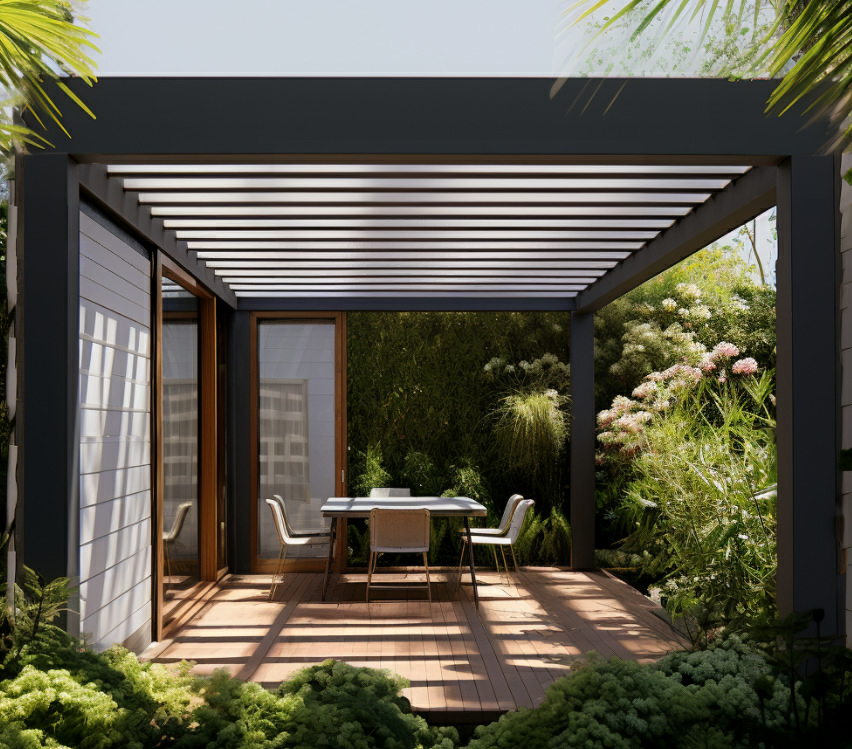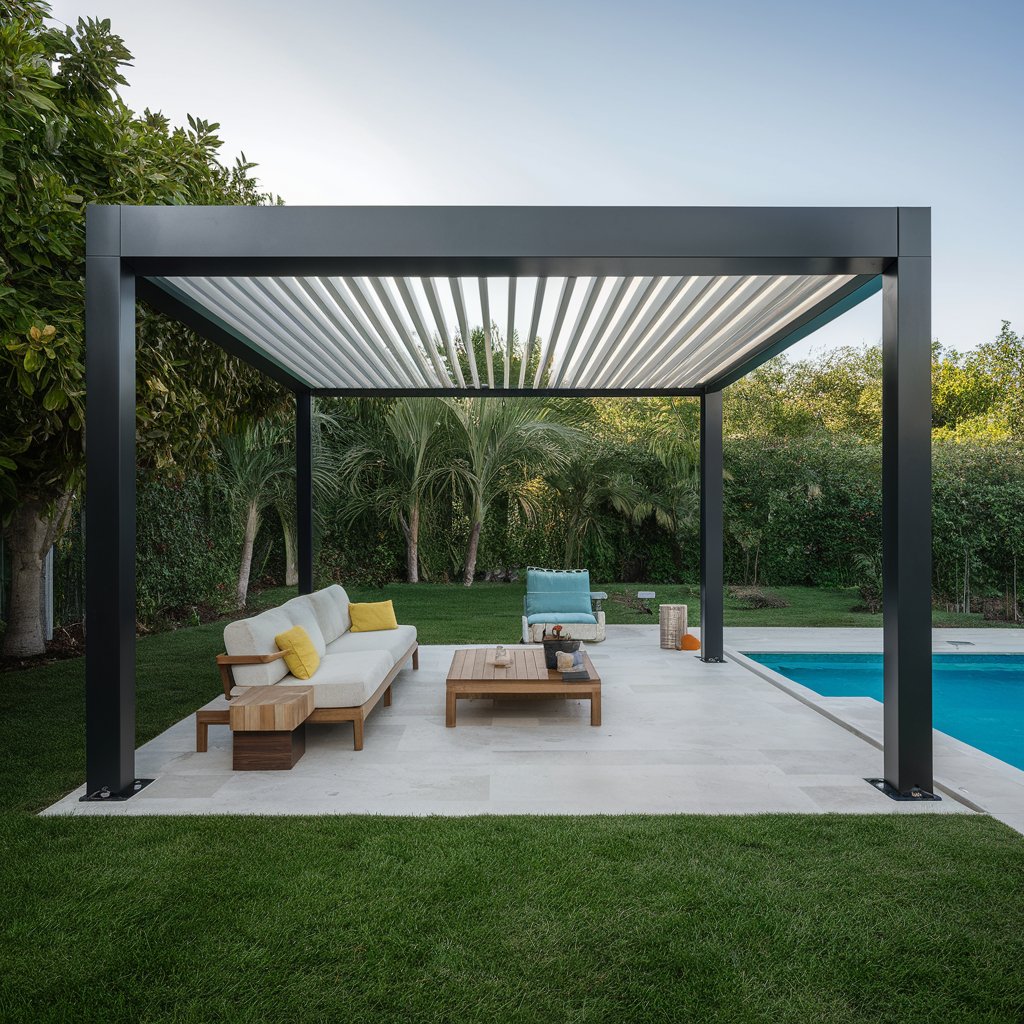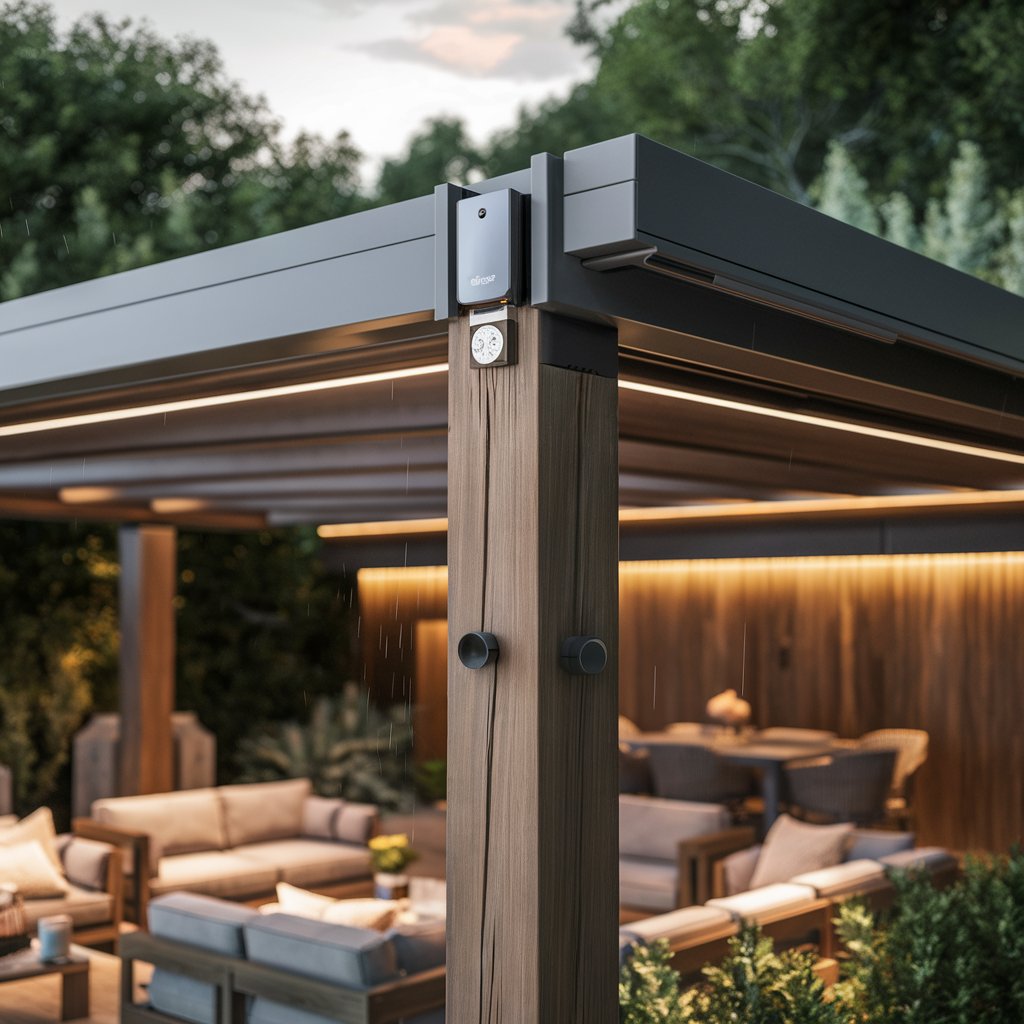Introduction to Aluminum Pergola Awnings
Aluminum pergola awnings are versatile outdoor structures designed to provide shade and enhance the aesthetic appeal of outdoor spaces such as patios, gardens, and terraces. They combine the durability of aluminum with the functionality of pergolas, offering a robust solution for creating shaded areas in residential and commercial settings.

Features of Aluminum Pergola Awnings
Aluminum pergola awnings come with several distinctive features that make them a popular choice among homeowners and businesses alike:
- Durability: Aluminum is known for its durability and resistance to rust and corrosion, making it suitable for outdoor use in various weather conditions.
- Lightweight: Compared to traditional materials like wood or steel, aluminum is lightweight yet strong, making it easier to handle during installation.
- Customizability: They are available in a wide range of designs, sizes, and colors, allowing homeowners to choose a style that complements their outdoor decor and architectural style.
- Adjustable Louvers: Many aluminum pergola awnings feature adjustable louvers, which can be tilted to control sunlight exposure and ventilation.
- Weather Resistance: They are designed to withstand harsh weather elements such as rain, snow, and UV radiation without deteriorating or requiring extensive maintenance.
Benefits of Aluminum Pergola Awnings
Aluminum pergola awnings offer several benefits that contribute to their popularity and practicality in outdoor living spaces:
- Shade and Comfort: By providing a shaded area, they create a comfortable outdoor environment where homeowners can relax, dine, or entertain guests without being exposed to direct sunlight.
- Energy Efficiency: They help reduce heat gain in adjacent indoor spaces, potentially lowering cooling costs during hot weather.
- Aesthetic Enhancement: They enhance the visual appeal of outdoor areas, adding a stylish and contemporary element to gardens, patios, and poolside lounges.
- Versatility: Aluminum pergola awnings can serve multiple purposes, from creating a cozy dining area to providing shelter for outdoor furniture and equipment.
- Longevity: With proper maintenance, aluminum pergola awnings can last for many years, making them a durable and cost-effective investment for homeowners.
Types of Aluminum Pergola Awnings
Aluminum pergola awnings come in various types and configurations, each offering unique features and advantages:
- Freestanding Aluminum Pergolas: These are standalone structures that can be placed anywhere in the garden or backyard, providing shade and a focal point for outdoor activities.
- Attached Aluminum Pergolas: Attached to the exterior wall of a house or building, these pergolas extend the living space and provide a seamless transition between indoor and outdoor areas.
- Motorized Aluminum Pergolas: Motorized pergola awnings feature adjustable louvers or retractable canopies that can be operated with a remote control, allowing homeowners to customize shade and ventilation levels effortlessly.
- Fixed Aluminum Pergolas: Fixed pergolas have stationary louvers or canopies that provide permanent shade and protection from the elements without the need for manual adjustment.
Installation of Aluminum Pergola Awnings
Installing an aluminum pergola awning requires careful planning and adherence to local building codes and regulations. Here are the basic steps involved in the installation process:
- Site Preparation: Choose a suitable location for the pergola awning, considering factors such as sun exposure, existing landscaping, and proximity to the house or other structures.
- Foundation: Depending on the type of pergola awning, a solid foundation may be necessary to ensure stability and support. This may involve pouring concrete footings or securing anchor bolts into existing concrete or pavers.
- Assembly: Follow the manufacturer’s instructions to assemble the aluminum frame, including attaching posts, beams, and optional adjustable louvers or canopy panels.
- Attachment to Structure: If installing an attached pergola awning, secure the frame to the exterior wall of the house using appropriate mounting brackets and hardware.
- Electrical and Plumbing Considerations: For motorized pergola awnings, ensure that electrical wiring and any plumbing for rainwater drainage are installed according to safety standards and regulations.
- Finishing Touches: Once the pergola awning is securely installed, perform a final inspection to ensure all components are properly aligned and secure. Apply any recommended finishes or treatments to protect the aluminum from weather damage and enhance its appearance.
- Safety and Compliance: Before completing the installation, verify compliance with local building codes and obtain any necessary permits or approvals.
Maintenance of Aluminum Pergola Awnings
Proper maintenance is essential to prolong the lifespan and appearance of aluminum pergola awnings. Here are some maintenance tips:
- Regular Cleaning: Clean the aluminum surfaces regularly using water and a mild detergent to remove dirt, debris, and stains. Avoid abrasive cleaners or materials that could scratch the finish.
- Inspect for Damage: Periodically inspect the pergola awning for signs of wear, corrosion, or loose components. Address any issues promptly to prevent further damage.
- Lubrication: If the pergola awning features adjustable louvers or motorized components, lubricate moving parts as recommended by the manufacturer to ensure smooth operation.
- Seasonal Checks: Before each season, check the awning for any damage caused by winter weather or strong winds. Repair or replace damaged components as needed.
- Protection from Elements: Consider applying a protective coating or sealant to the aluminum surfaces to enhance weather resistance and prevent oxidation.
- Professional Inspection: Schedule periodic inspections by a qualified professional to assess the structural integrity and overall condition of the pergola awning.
Considerations for Choosing an Aluminum Pergola Awning
When selecting an aluminum pergola awning for your outdoor space, consider the following factors:
- Size and Design: Choose a pergola awning size and design that complements your home’s architecture and outdoor decor.
- Material Quality: Opt for high-quality aluminum that is durable and resistant to corrosion for long-lasting performance.
- Functionality: Decide whether you prefer a fixed, adjustable, or motorized pergola awning based on your shading and ventilation needs.
- Budget: Determine your budget and compare prices from different manufacturers or suppliers to find a pergola awning that fits within your financial constraints.
- Installation Requirements: Consider the complexity of installation and whether you have the skills and tools necessary to assemble the pergola awning yourself or if professional installation is recommended.
- Maintenance Needs: Evaluate the maintenance requirements of different pergola awning models and choose one that aligns with your ability and willingness to perform upkeep tasks.
Conclusion
Aluminum pergola awnings offer a versatile and stylish solution for creating shaded outdoor areas that enhance comfort and aesthetics. With their durable construction, customizable features, and low maintenance requirements, they are a practical investment for homeowners looking to extend their living space into the outdoors. By understanding the features, benefits, installation process, maintenance tips, and factors to consider when choosing a pergola awning, you can make an informed decision that enhances your outdoor living experience for years to come.
This comprehensive guide provides a detailed overview of aluminum pergola awnings, empowering you to explore the possibilities and advantages they offer for your home or commercial property.


